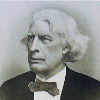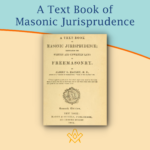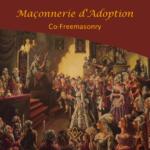The trowel is a fundamental instrument in the world of Masonry, used to signify and represent unity and brotherly love among its members. It not only has significant meaning within the Masonic context but also has a rich history connected to various traditions and events.
This article will delve into the origins and significance of trowel Masonic symbolism, examining its association with the Masonic family, the connection between trowel and sword, and the Society of the Trowel. By exploring these aspects, one will gain a deeper understanding of the role the trowel plays in Masonry and its enduring influence on the symbolical practices within the Order.
The Trowel as a Symbol of Unity and Brotherly Love
The trowel finds its roots in operative masonry, where it was used by stone masons to spread cement, binding the building’s various components into a cohesive unit.
In speculative masonry, the trowel stands for a metaphorical cement – that of affection, kindness, unity, and brotherly love that binds together the Masonic fraternity regardless of geographical boundaries.
The trowel is considered the primary working tool for a Master Mason. The Apprentice Mason focuses on shaping raw materials using a gage and gavel, while the Fellow Craft Mason employs the level, square, and plumb to position unhewn stones properly.
It is the Master Mason’s duty to evaluate and attest the materials’ accuracy and dependability, securing them permanently in place with the cement spread by the trowel. The cement signifies the unity and brotherly love experienced within the Masonic family.
The Trowel and Sword: Symbolism of Resistance and Social Duty
In the face of opposition in rebuilding the walls of Jerusalem, Nehemiah commanded that builders don their armor and wield a sword alongside their trowel. The combination of the trowel and sword symbolized that while unity and brotherly love were crucial, resistance to lawless violence and anti-social forces was also an essential aspect of social duty.
Origins: Nehemiah and Artaxerxes Longimanus
Nehemiah, appointed by Artaxerxes Longimanus as Governor of Judea, was given permission to rebuild Jerusalem’s walls.
However, his actions faced resistance from Persian satraps and Samaritans who feared the re-establishment of an independent Kingdom of Judea. Josephus, a Jewish-Roman historian, notes that builders who worked on the walls were required to have their armor and sword beside them.
15th Degree of the Ancient and Accepted Scottish Rite
The trowel and sword symbol, having its origins in the story of Nehemiah, appears in the 15th Degree of the Ancient and Accepted Scottish Rite – the Knight of the East – which pertains to the building of Zerubbabel’s Temple.
The degree’s old instructions describe that the builders had to wield a sword and a trowel for both labor and defense purposes, ensuring their capability to counter any enemy threats.
Tracing Board of the English Royal Arch
The trowel and sword, albeit depicted without chronological accuracy, are also featured on the Tracing Board of the English Royal Arch. Dr. Oliver interprets this symbolism to mean that in addition to obeying lawful authority, resistance against lawless violence is a vital component of a person’s social duty.
The Society of the Trowel: A Festive Association in Florence
The Formation of the Society
The Society of the Trowel was established in 1512 in Florence, Italy, drawing together some of the city’s most renowned and educated inhabitants. However, this social club was not connected to Freemasonry. Instead, it was a festive association or dinner club for artists living in Florence during the Renaissance.
Originating from a light-hearted incident in which painters and sculptors dining together found a trowel and used it humorously, they decided to form a club to dine together annually. The annual meetings were held in memory of the accidental incident that led to their establishment.
Misinterpretations of Connection to Freemasonry
Despite having no ties to Freemasonry, some writers attributed the Society of the Trowel to be the first appearance of Freemasonry in Florence. This misinformation stems from the fact that the Society used various trowel-related symbols, which were not related to Freemasonry symbolism but were only tokens of a festive gathering among artists in the city.
In conclusion, the trowel’s Masonic symbolism holds great significance as a representation of unity and brotherly love within the Masonic fraternity.
Its connections to historical events and figures such as Nehemiah, Zerubbabel, and its usage in the context of the Ancient and Accepted Scottish Rite underscore the importance of social duty and resistance to unjust violence.
Additionally, the Society of the Trowel in Renaissance Florence showcases the multifaceted influence of the trowel in history.
By understanding the trowel’s Masonic symbolism, one can better appreciate the operative and speculative Masonic practices and appreciate the rich traditions intertwined with this powerful symbol.
Article by: Albert G. Mackey

Albert Gallatin Mackey (1807 – 1881) was an American medical doctor and author.
He is best known for his books and articles about freemasonry, particularly the Masonic Landmarks.
In 1849 he established The Southern and Western Masonic Miscellany, a weekly masonic magazine.
He served as Grand Lecturer and Grand Secretary of The Grand Lodge of South Carolina, as well as Secretary General of the Supreme Council of the Ancient and Accepted Scottish Rite for the Southern Jurisdiction of the United States
Recent Articles: Albert Mackay
 Unlock the secrets of the Freemasonry with The Blazing Star - a symbol that holds immense significance in their rituals and practices. Delve into its history, meaning and role in the different degrees of Freemasonry with expert insights from the Encyclopedia of Freemasonry by Albert Mackey. Discover the mystique of The Blazing Star today! |
 Masonic Miscellanies - The Symbol of the Serpent As a symbol, the serpent obtained a prominent place in all the ancient initiations and religions. |
 This rite of investiture, or the placing upon the aspirant some garment, as an indication of his appropriate preparation for the ceremonies in which he was about to engage, prevailed in all the ancient initiations. Extract from The Symbolism of Freemasonry by Albert G. Mackey |
 The All-Seeing Eye of God, also known as the Eye of Providence, is a representation of the divine providence in which the eye of God watches over humanity. It frequently portrays an eye that is enclosed in a triangle and surrounded by rays of light or splendour. |
 Book Intro - A Text Book of Masonic Jurisprudence An introduction to Albert Mackey's seminal work on Masonic Jurisprudence – the theory or philosophy of Masonic law. The Foundations of Masonic Law are to be found in the Landmarks, or Unwritten Law, and in the Ancient Constitutions, or the Written Law. These constitute the subject matter of the book. |
 "The first great duty, not only of every lodge, but of every Mason, is to see that the landmarks of the Order shall never be impaired." — Albert Mackey (1856) |
 Extracted and abridged from The Mystic Tie: Or, Facts and Opinions, Illustrative of the Character and Tendency of Freemasonry By Albert Mackey, |
 Book Intro - The Principles of Masonic Law "The first great duty, not only of every lodge, but of every Mason, is to see that the landmarks of the Order shall never be impaired". |
 Masonic Miscellanies - The Symbolism of the Gloves The Symbolism of the Gloves and why Freemasons wear white gloves |
 A look at Adoptive Lodges that were established in France for the initiation of females; a short Extract from the Encyclopedia Of Freemasonry |
 Book Intro - The Symbolism of Freemasonry Introduction to a classic masonic book; The Symbolism of Freemasonry: Illustrating and Explaining Its Science and Philosophy, its Legends, Myths and Symbols. |
masonic knowledge
to be a better citizen of the world
share the square with two brothers

click image to open email app on mobile device







